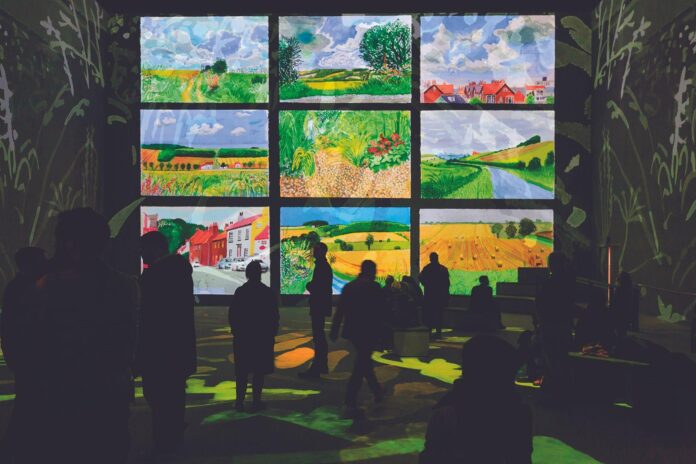“Immersive” is among the art world’s favourite words. The highest-profile examples of an infatuation with enveloping environments are the vast digital projections of the works of Vincent van Gogh or Frida Kahlo and Diego Rivera, etc, popping up around the globe. But the thirst for engulfment is widespread: on a single day, I received ten press releases announcing projects, involving artists as diverse as the US sculptor Louise Nevelson and Chinese multimedia artist LuYang, proclaiming their work’s immersive tendencies.
There’s nothing new in art appealing to multisensory experience. Installation is an artistic tradition with a long history. Part of its power lies precisely in its capacity to overwhelm. Many examples have been among my favourite works in recent years, by artists from Philippe Parreno to Shilpa Gupta and Steve McQueen. It is also growing in popularity: little more than a decade ago, in Yayoi Kusama’s 2012 Tate Modern retrospective, you could see her Infinity Rooms with relative ease; now you have to book months ahead.
But the Infinity Rooms are the best example of a growing tendency for a kind of hybrid format between installation and sons et lumières, emphasising spectacle over more resonant content. They’re slick, technically accomplished, and hugely Instagrammable.
But common to them is a distinct emptiness. And it seems to me that this is the danger of the primacy of art that’s immersive, per se. Because much of it encourages passivity. It makes me think of seated 19th-century audiences witnessing moving panoramas, the high-tech immersive experience of the late Georgian and Victorian age. It happens to us rather than compelling our own engagement.
This was hammered home when I saw David Hockney’s Bigger & Closer (not smaller & further away) at the Lightroom in London last month, where the most effective section involved restagings of his opera designs, and the least enjoyable a sequence that flicked quickly through his sketchbooks, not allowing us to pause and inspect—indeed, to immerse ourselves—in the drawings.
Conferring agency
The best art experiences, in whatever medium, give us agency in our enthralment. When I saw the recent Cézanne show at Tate Modern, I was spellbound by his brushwork, those famous parallel strokes and swatches and flurries of colour. You “peer through [Cézanne’s] kaleidoscope at a world brimming with indeterminacy”, as the painter Amy Sillman beautifully put it. The Frenchman’s paintings are mostly easel-scale but, like the best Van Goghs and Kahlos, can entrance and engulf us as much as any room-filling projection.
But this is not to argue for the primacy of old-school immersion over new. Two current shows in London—Mike Nelson’s at the Hayward Gallery and Nalini Malani’s at the National Gallery (both described as immersive in their publicity) overwhelm the senses while also prompting an engagement beyond the worlds with which they surround and even bombard us. They ignited mental journeys—geopolitical, literary, art historical—that sustained me long after I left the galleries that housed them.
Increasingly, then, when I read the term immersive, I recoil. Not only has it become a byword for a shallow form of spectacle, but it is also a quality that arguably all art can possess. Its ubiquity only emphasises its meaninglessness.

























